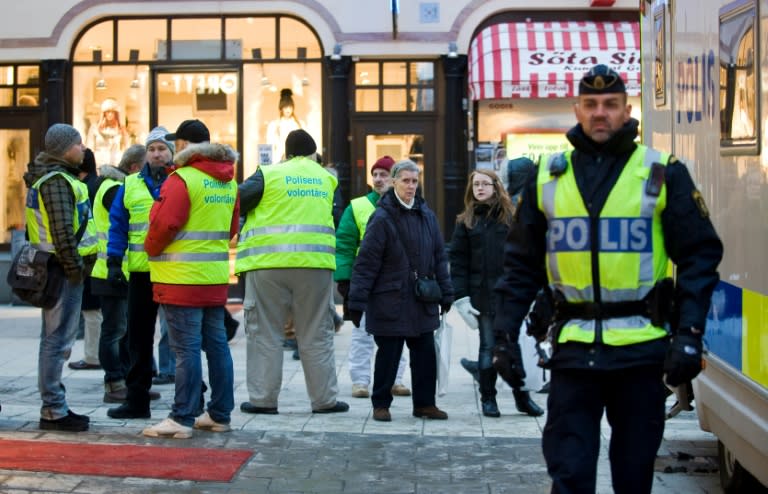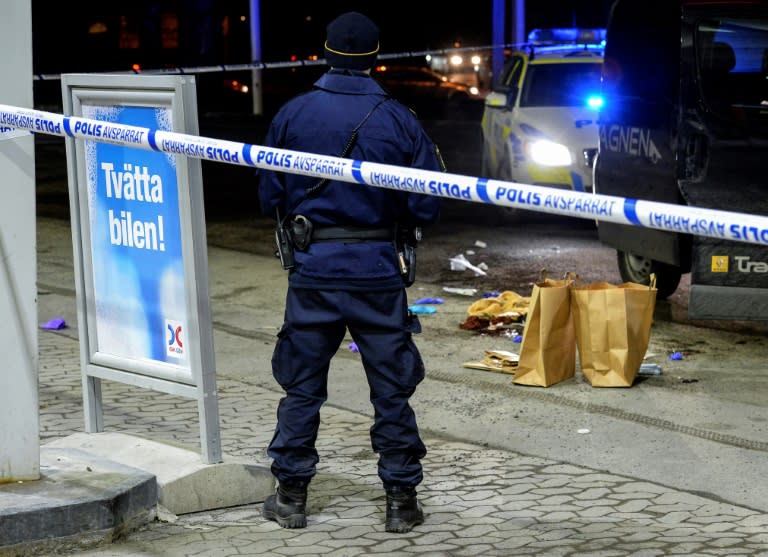After Trump comments, the reality of crime and migrants in Sweden
US President Donald Trump's remarks over the weekend that Sweden is paying a high price for its generous asylum policy, including mention of a non-existent terror incident, have baffled Swedes. So what is the real link between immigration, delinquency and terrorism in the Scandinavian country? - What did Donald Trump say? - "You look at what's happening in Germany, you look at what's happening last night in Sweden. Sweden, who would believe this? Sweden. They took in large numbers. They're having problems like they never thought possible," Trump told a campaign-style rally in Florida on Saturday, as he launched into a list of places that have been targeted by terrorists. No serious incident occurred on Friday evening in Sweden and Trump later acknowledged he was referring to a Fox News report, which contained several approximations and exaggerations, and presented Sweden as a violent nation. The Republican president tweeted on Monday: "Give the public a break - The FAKE NEWS media is trying to say that large scale immigration in Sweden is working out just beautifully. NOT!" - Has there been a terrorist act in Sweden? - Yes, but before the large migrant influx in 2014-2015, when Sweden took in the highest number of asylum seekers per capita in Europe. Of the 244,000 people who sought asylum during that period, 34 percent were Syrian and 10 percent were Iraqis. On December 11, 2010, a Swedish citizen of Iraqi origin, Taymour Abdel Wahab, blew himself up in a busy shopping street in central Stockholm. Two people were lightly injured in the attack. More recently, a White House list of 78 terror attacks that received little media attention included a Molotov cocktail attack in October against a Muslim (Shiite) prayer room in Sweden's third city Malmo. A Syrian man was arrested in connection with the attack and no one was injured. The Swedish intelligence agency Sapo has assessed the national terror threat status as "high", the second-highest level on a five-point scale, as around 150 people from Sweden have returned from fighting with the so-called Islamic State (IS) in Iraq and Syria. - Has crime risen since the arrival of many refugees? - Sweden registered a record number of crimes per capita in 2015, according to the government agency Swedish Crime Prevention Council (BRA). The figures are just a bit higher than in 2009. Crimes and misdemeanours rose by 4.1 percent from 2014 to 2015. Property damage (theft, robbery, burglary) jumped by 7.2 percent between 2014 and 2015. But violence against persons fell by 0.4 percent and all sexual crimes plunged by 11 percent in the same period, according to BRA. Detailed crime statistics for 2016 will not be published until the end of March. Preliminary data shows a jump in attacks on persons (+7 percent), including a sharp rise in rapes (+13 percent) and a drop in attacks on property (-5 percent). Criminologists noted that changes in statistical methods or penal qualifications may explain annual variations. Comparisons are therefore risky. Sweden has one of the lowest crime rates in the world with a homicide rate of 1.1 per 100,000 inhabitants in 2015, according to BRA. That is 4.5 times lower than in the United States (4.9 according to the FBI). - Is crime higher among foreigners in general? - Yes. The Swedish police do not provide statistics based on ethnicity but people who were born abroad or whose parents were born abroad are twice as likely to appear in crime statistics than those whose parents were born in Sweden, according to a study by BRA. Nevertheless the vast majority of crimes in the country are committed by the native Swedish population. That study also shows that in similar socio-economic conditions, the risk of getting in trouble with the law is virtually the same. And asylum seekers are also victims of crimes. Last year, 92 refugee housing centres across Sweden were hit by arson attacks. In October 2015, a young neo-Nazi stabbed and killed two teachers and a high-school student with immigrant backgrounds in a southwestern Swedish town.




